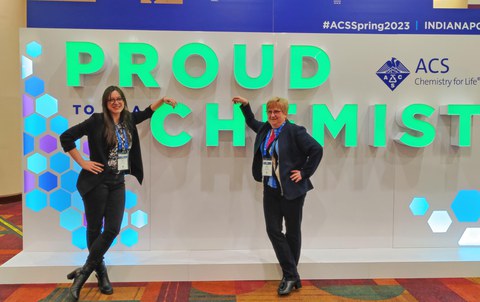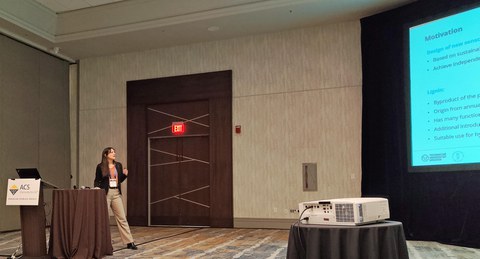Apr 13, 2023
ACS spring meeting 2023

ACS spring meeting 2023 Indianapolis
Johanna Nong presented the results of Paul Nawroth's master's thesis on the suitability of lignosulfonate hydrogels as sensor materials for ions. Lignin, a renewable biopolymer, origin from annual and perennial plants is a conceivable alternative to fossil raw
materials. The polyphenol has a variety on hydrophilic oxygen functional groups, which makes them suitable for the synthesis to hydrogel. It is known that lignin
based hydrogels can react to environmental influences. This effect can be used for sensor materials. For this application, the lignin sulfonate hydrogel with polyethylene glycol diacrylate (PEGDA) as crosslinker was attached to a silanized glass surface via free radical
polymerization. As a proof of concept, the sensor material was tested for the determination of ions and ionic strength by the example of magnesium ions and
sodium ions.

Johanna Nong at the ACS spring meeting 2023
Dr. Martina Bremer presented the results of Valentin Arndt's master's thesis on the fractionation of LignoboostTM kraft lignin using water-acetone mixtures in a poster contribution. ased on the functional groups and the π-electron systems, lignin is able to adsorb metal ions. This effect can be used in water cleaning or recovery of
commercially interesting transition and rare earth metals. However, technical lignin is a very inhomogeneous material with a broad spectrum of physical and chemical properties. Due to the very broad molar mass distribution, the proportion of functional groups varies in a wide range, which has a strong influence on reactivity for hydrogel formation as well as adsorption properties. The influence of an fractionation of an LignoboostTM lignin on chemical characteristic, structure and properties of formed hydrogels was
investigated.
